Double take: Mehdi Ghadyanloo uses the art of illusion to reveal truths
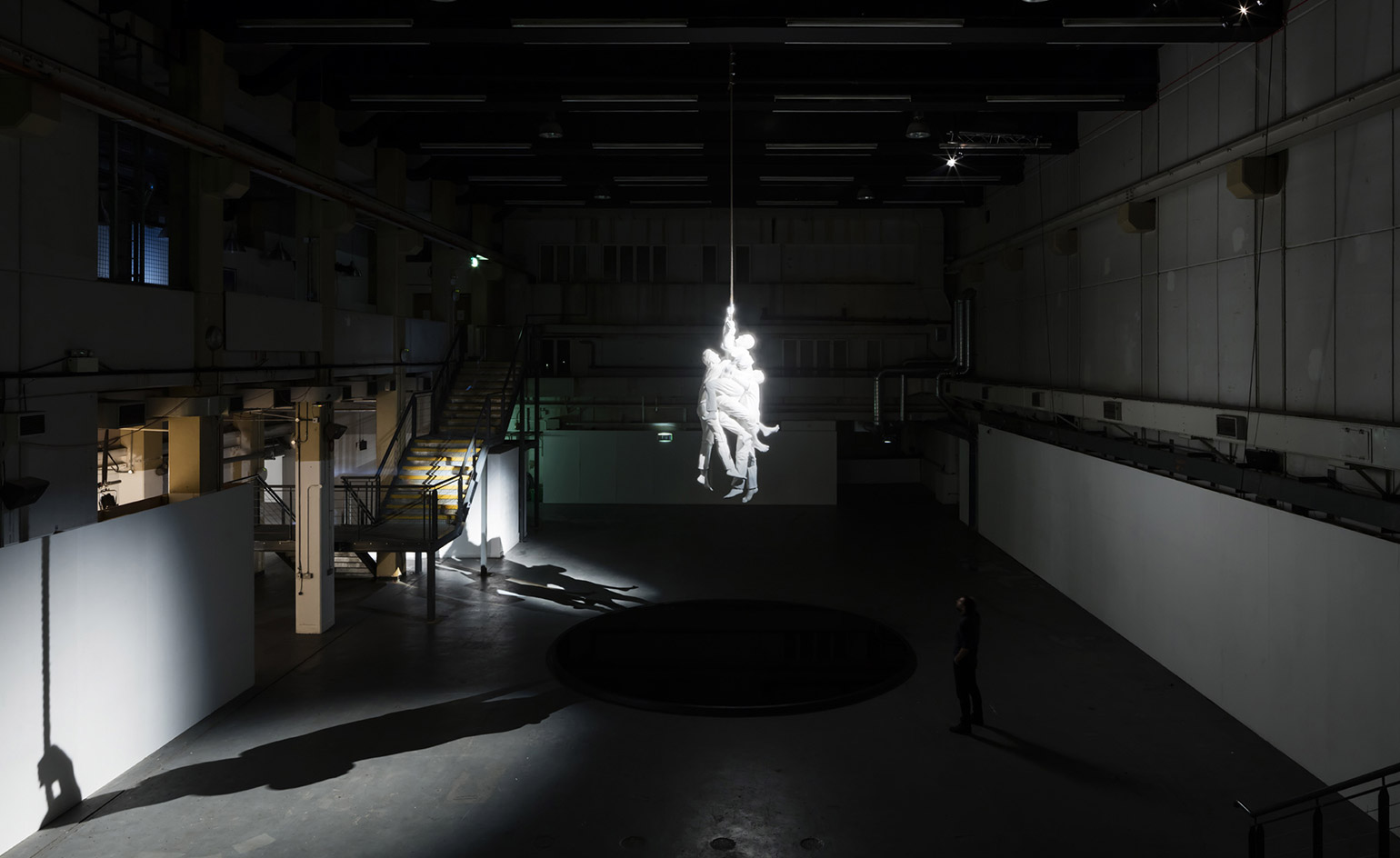
In October last year, Iranian artist Mehdi Ghadyanloo completed a major public commission in Boston for the Rose Kennedy Greenway project. Emblazoned across a 5,230 sq ft wall opposite the city’s South Station, Ghadyanloo’s uplifting trompe l’oeil mural appears to slice the building open to reveal a line of men, women and children inside, each holding a red helium balloon as they ascend a spiral staircase. At the top of the staircase, which stops short of the ceiling, a single giant balloon slips into the blue sky through an opening in the roof. The mural, called Spaces of Hope, symbolised a positive vision for the future of US Iran relations; one that has been made all the more poignant by Donald Trump’s recent travel ban, under which Ghadyanloo would no longer be permitted to enter the country.
Picking up where the Boston mural left off, a new off-site show of Ghadyanloo’s work, put together by Howard Griffin Gallery, has recently opened at London’s 14,000 sq ft Ambika P3 space. Working with the same title, ‘Spaces of Hope’ gathers new canvases and etchings, as well as a dramatic sculpture that hangs from P3’s 10m-high ceiling. Throughout the darkened industrial space, a haunting, specially-commissioned soundscape by DJ Seth Troxler plays out, creating the perfect atmospheric setting for Ghadyanloo’s disorientating works.
On his canvases, all created within the last two years, clean-lined architectural forms sit in barren landscapes inspired by his home country, while powerless, faceless figures stand helplessly trapped above or inside, looking towards the exit; which is often, frustratingly, just out of reach. ‘I had these ideas when I was working on walls in Tehran,’ says Ghadyanloo, referring to the some 100 murals that he was commissioned to paint in his home city by its beautification bureau over a seven year period. ‘But these,’ he says, gesturing to the canvases, ‘these were not suitable for the public; people would have committed suicide if they had seen them! I feel a responsibility, especially for Tehran, because there, people there are on the edge, you know. I was one of them.’
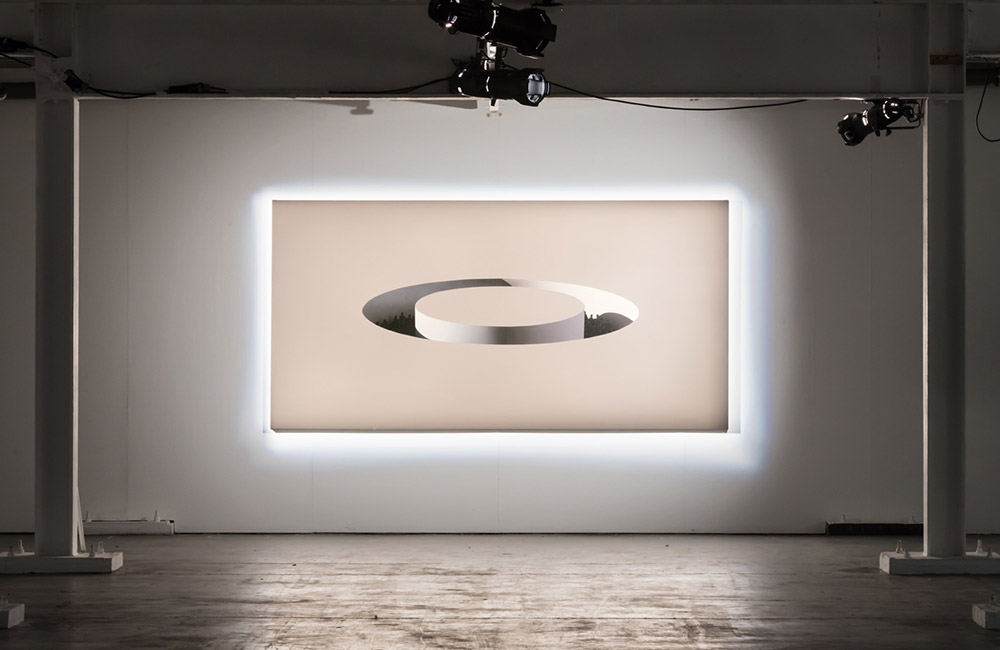
Installation view of ‘An Introduction To Stay’
In addition to the powerful canvases, a collection of intricate etchings are displayed along a corridor that sits in the centre of the subterranean space. Beyond this, P3’s cavernous triple-height space plays host to a 3D printed sculpture work that brings a scene depicted in one of Ghadyanloo’s etchings to life. Here, a huddle of faceless figures cling to a rope for dear life, suspended above a pool of water – an element that Ghadyanloo notes, is a nod to Japanese artist Noriyuki Haraguchi. In the vast space, the effect is like stepping inside his canvas.
While his colourful commissioned mural works have led to him being simplistically coined as Iran’s answer to Banksy by the press, Ghadyanloo is more inclined to draw comparisons with European surrealist painters such as Magritte, Girgio de Chirico and the minimal lines of modernist 20th century architects such as Le Corbusier. The dark themes in his work, he says, are informed directly by his harrowing experiences of growing up on a farm in Iran under conditions of war and economic sanction. ‘Painting is like therapy to me,’ he explains.
In more recent years, the opportunity to travel that his success has provided has equipped him with a fresh perspective. ‘I’ve found lots of connections between humans,’ he muses of his globe-trotting. ‘No matter where you grew up, what your religion is. There is no difference between us. We are all searching for hope, we are all looking for light.’
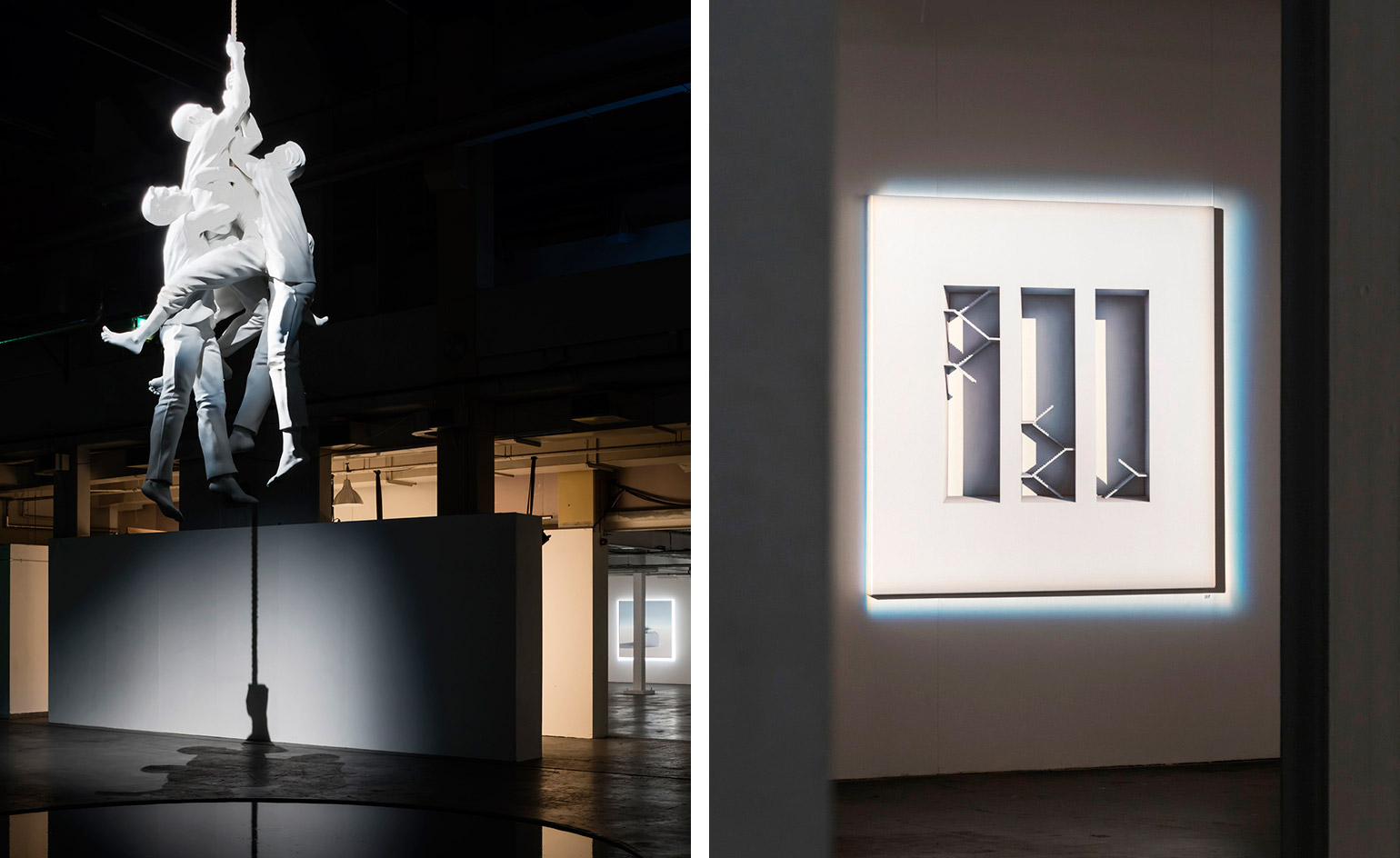
Left, a dramatic sculpture hangs from Ambika’s 10m-high ceiling. Right, Early Redemption
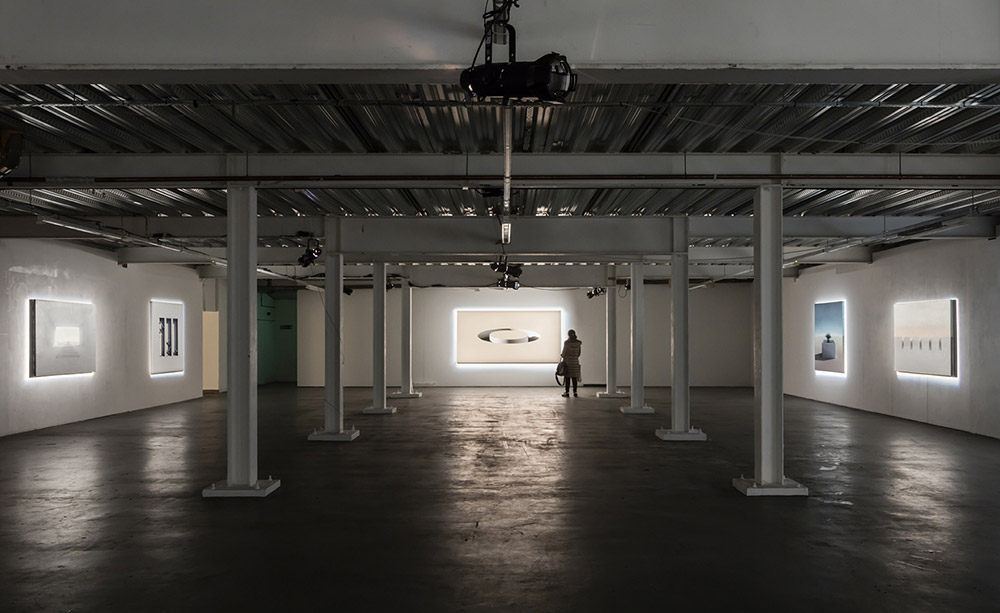
‘Spaces of Hope’ gathers new canvases and etchings
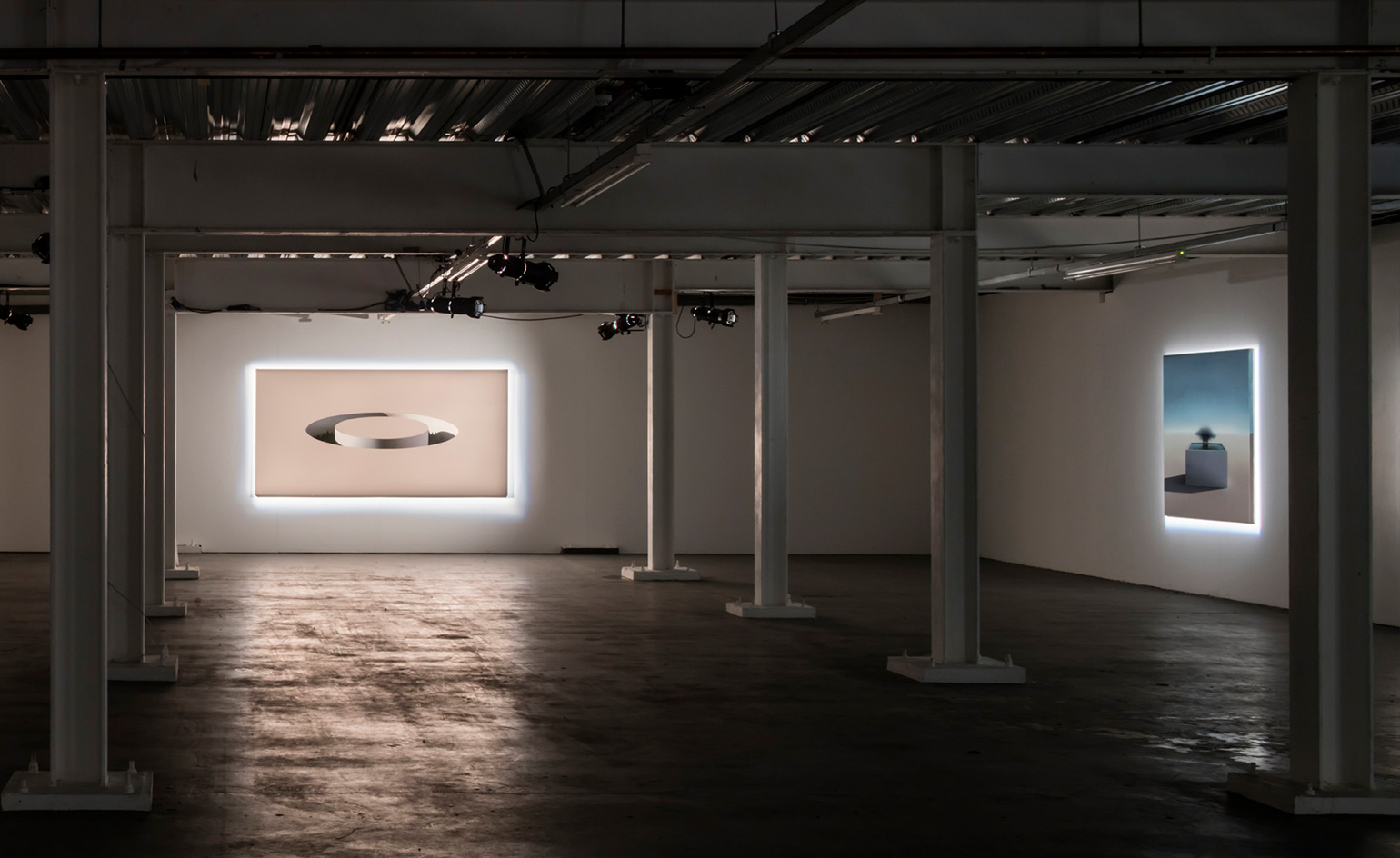
From left, An Introduction To Stay; and Routine Exercise

Routine Exercise; Genealogy Of isolation (Seclusion); and The City of Hope
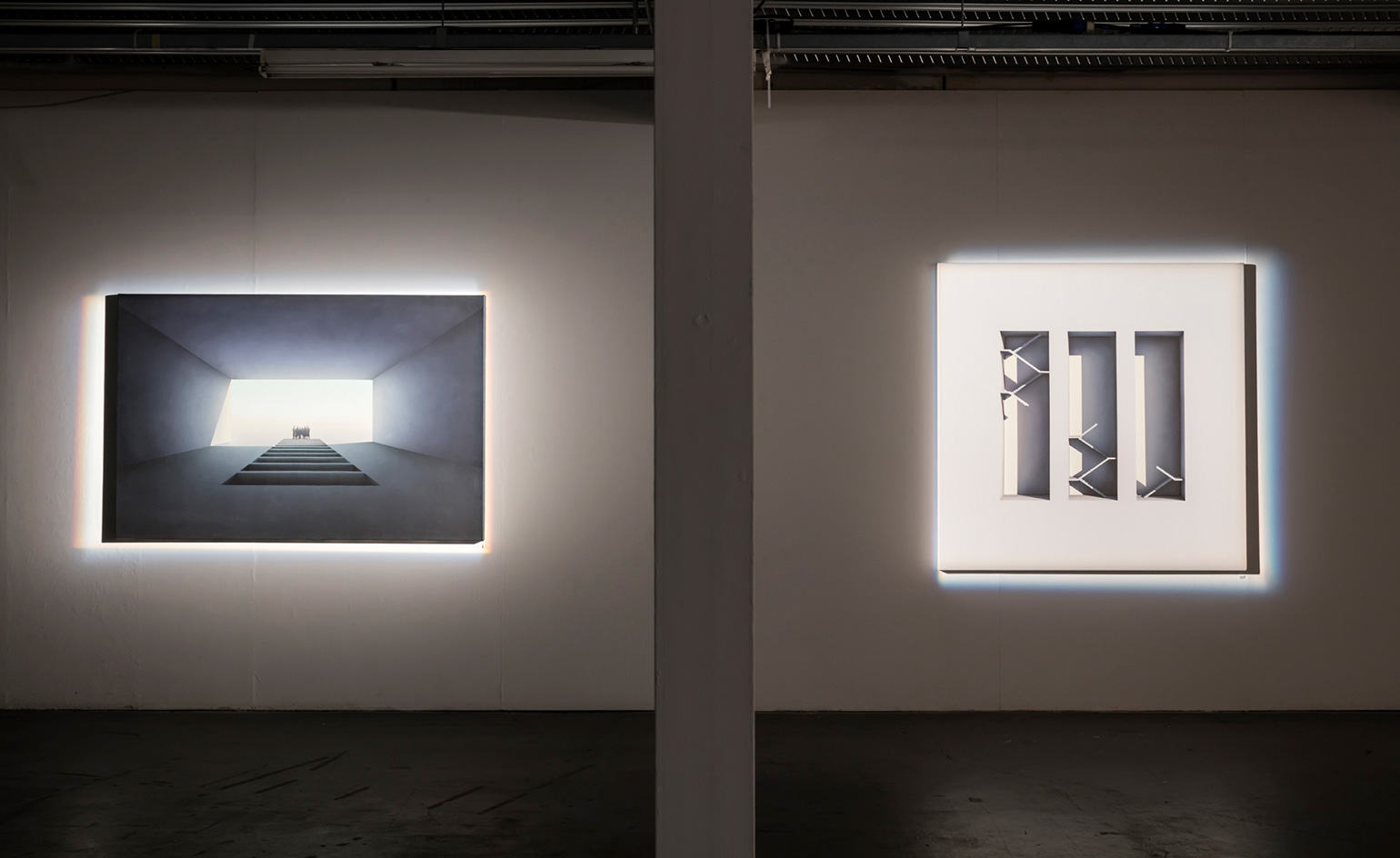
Deadened Profits; and Early Redemption
INFORMATION
’Spaces of Hope’ (an off-site project by Howard Griffin Gallery) is on view until 5 March. For more information, visit the Howard Griffin Gallery website
ADDRESS
Ambika P3
35 Marylebone Road
London NW1 5LS
Receive our daily digest of inspiration, escapism and design stories from around the world direct to your inbox.
Ali Morris is a UK-based editor, writer and creative consultant specialising in design, interiors and architecture. In her 16 years as a design writer, Ali has travelled the world, crafting articles about creative projects, products, places and people for titles such as Dezeen, Wallpaper* and Kinfolk.
-
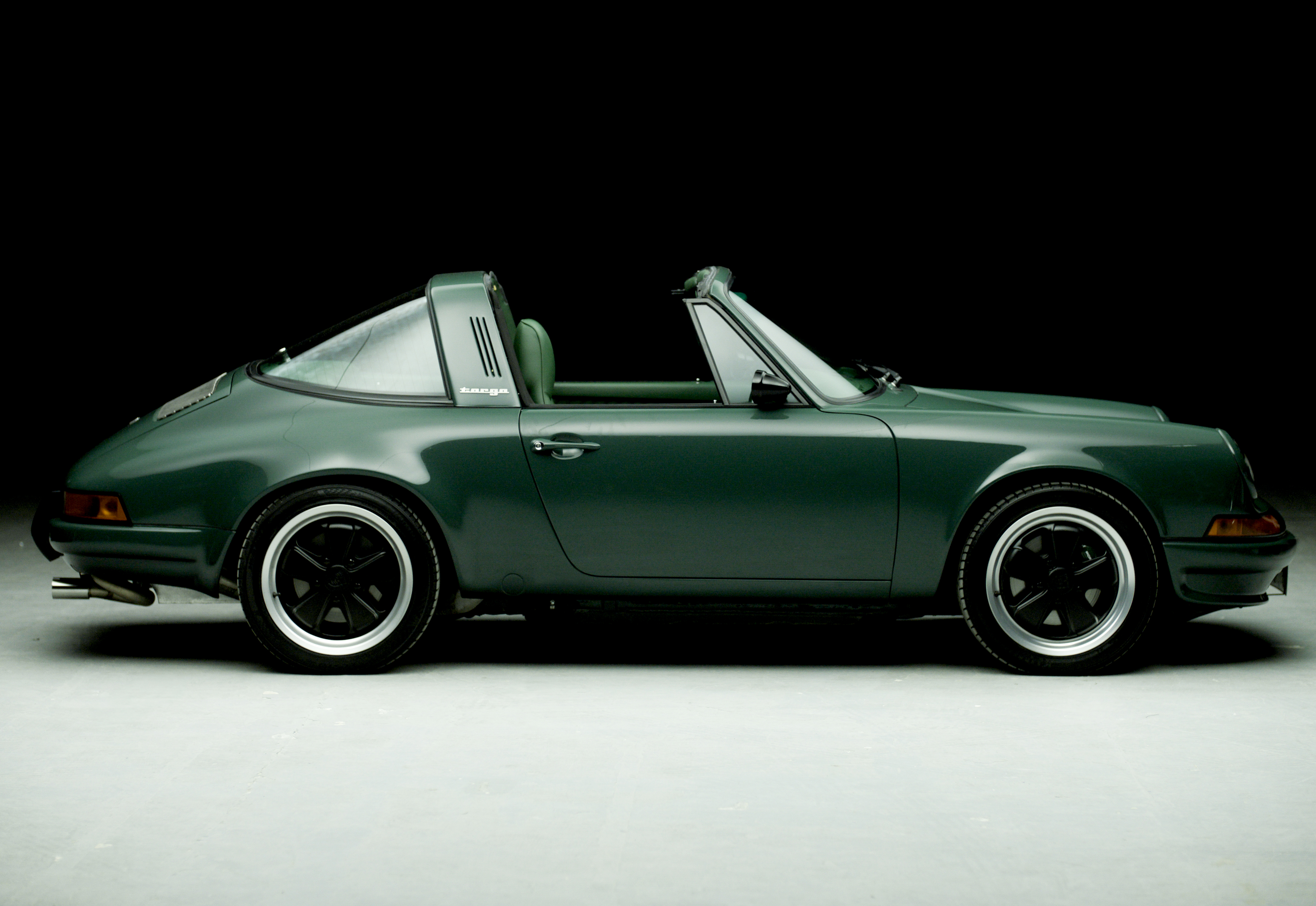 Wallpaper* Design Awards: how David/Nicolas reimagined a 1990 Porsche 964 Targa
Wallpaper* Design Awards: how David/Nicolas reimagined a 1990 Porsche 964 TargaThe two-seater convertible Porsche was given a makeover by the designers, featuring an oiled teak handbrake, machined brass dials, and Connolly leather interiors
-
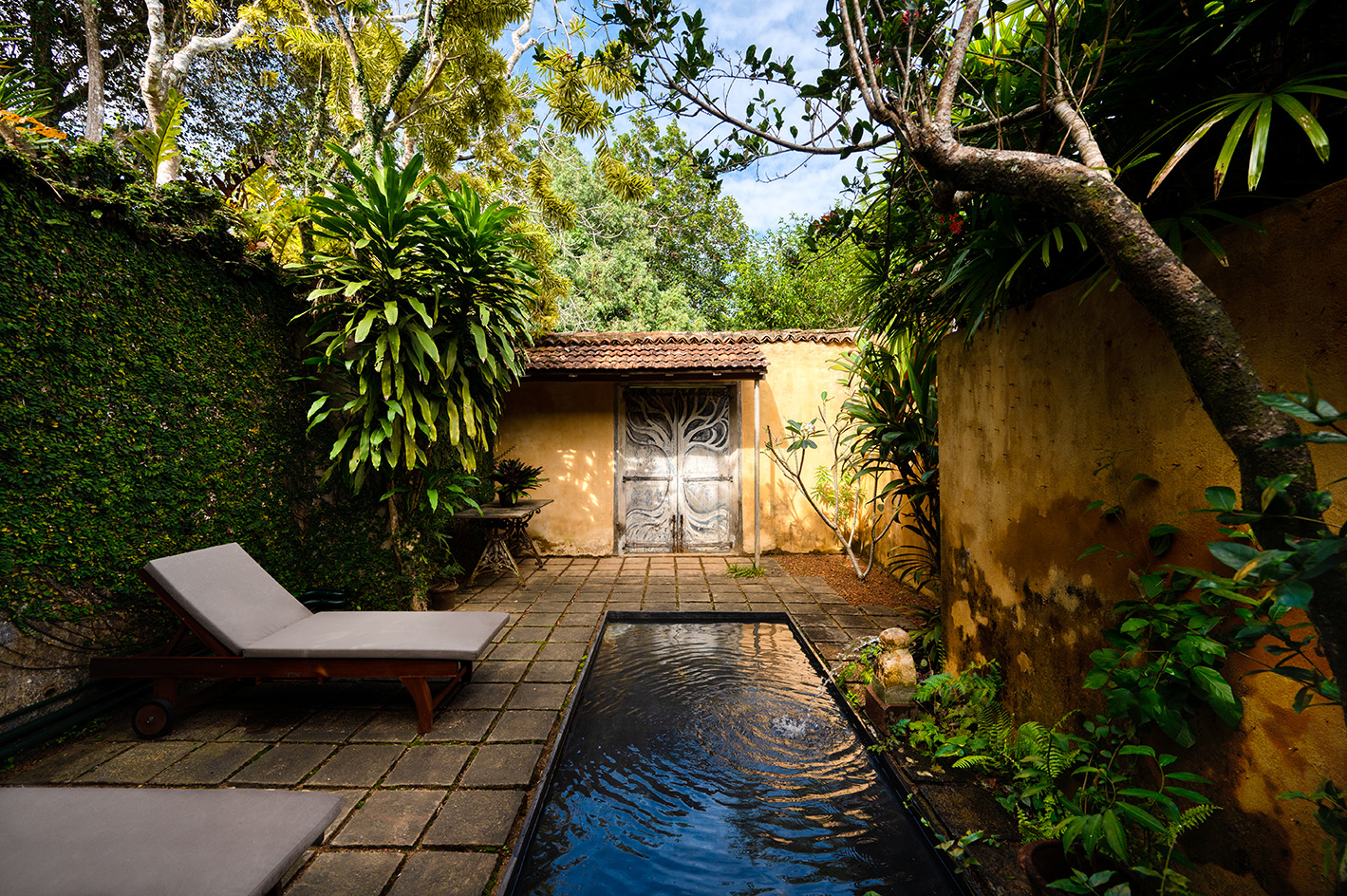 Wallpaper* Architect Of The Year 2026: Marina Tabassum on a building that made her smile
Wallpaper* Architect Of The Year 2026: Marina Tabassum on a building that made her smileMarina Tabassum discusses Geoffrey Bawa’s Lunuganga, and more – as we asked our three Architects of the Year at the 2026 Wallpaper* Design Awards about a building that made them smile
-
 Cult accessory brand Déhanche unveils chunky hardware jewellery
Cult accessory brand Déhanche unveils chunky hardware jewelleryAfter three years of creating jewelled belt buckles, Déhanche jewellery joins our wish list
-
 Wallpaper* Design Awards: meet Klára Hosnedlová, art’s Best Dreamscaper
Wallpaper* Design Awards: meet Klára Hosnedlová, art’s Best DreamscaperThe immersive worlds that the Czech artist creates make her a worthy Wallpaper* Design Award 2026 winner; she speaks to us ahead of her first show at White Cube, London
-
 Out of office: The Wallpaper* editors’ picks of the week
Out of office: The Wallpaper* editors’ picks of the week'Tis the season for eating and drinking, and the Wallpaper* team embraced it wholeheartedly this week. Elsewhere: the best spot in Milan for clothing repairs and outdoor swimming in December
-
 Out of office: The Wallpaper* editors’ picks of the week
Out of office: The Wallpaper* editors’ picks of the weekFar from slowing down for the festive season, the Wallpaper* team is in full swing, hopping from events to openings this week. Sometimes work can feel like play – and we also had time for some festive cocktails and cinematic releases
-
 The Barbican is undergoing a huge revamp. Here’s what we know
The Barbican is undergoing a huge revamp. Here’s what we knowThe Barbican Centre is set to close in June 2028 for a year as part of a huge restoration plan to future-proof the brutalist Grade II-listed site
-
 Out of office: The Wallpaper* editors’ picks of the week
Out of office: The Wallpaper* editors’ picks of the weekIt’s wet, windy and wintry and, this week, the Wallpaper* team craved moments of escape. We found it in memories of the Mediterranean, flavours of Mexico, and immersions in the worlds of music and art
-
 Each mundane object tells a story at Pace’s tribute to the everyday
Each mundane object tells a story at Pace’s tribute to the everydayIn a group exhibition, ‘Monument to the Unimportant’, artists give the seemingly insignificant – from discarded clothes to weeds in cracks – a longer look
-
 Out of office: The Wallpaper* editors’ picks of the week
Out of office: The Wallpaper* editors’ picks of the weekThis week, the Wallpaper* team had its finger on the pulse of architecture, interiors and fashion – while also scooping the latest on the Radiohead reunion and London’s buzziest pizza
-
 Out of office: The Wallpaper* editors’ picks of the week
Out of office: The Wallpaper* editors’ picks of the weekIt’s been a week of escapism: daydreams of Ghana sparked by lively local projects, glimpses of Tokyo on nostalgic film rolls, and a charming foray into the heart of Christmas as the festive season kicks off in earnest